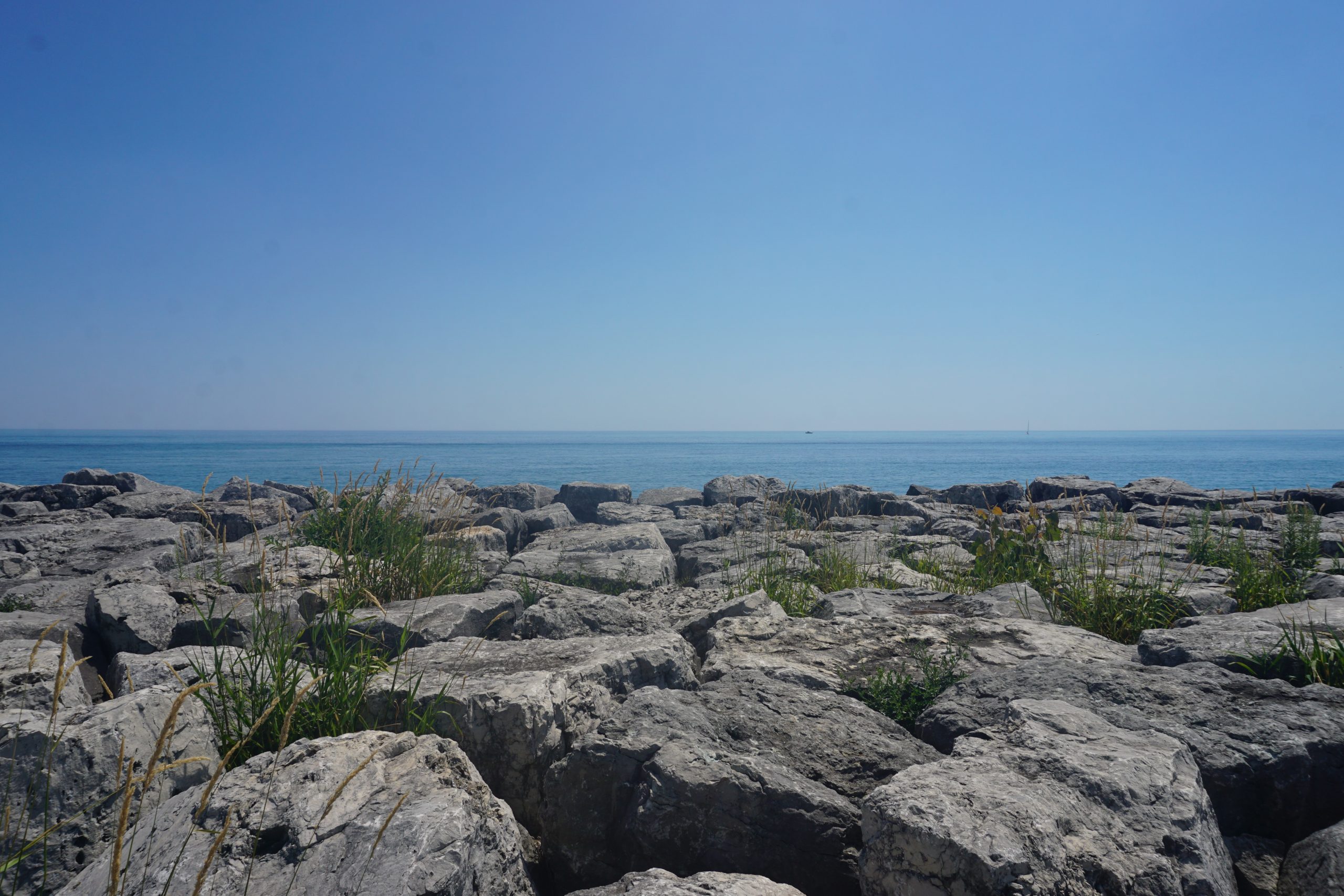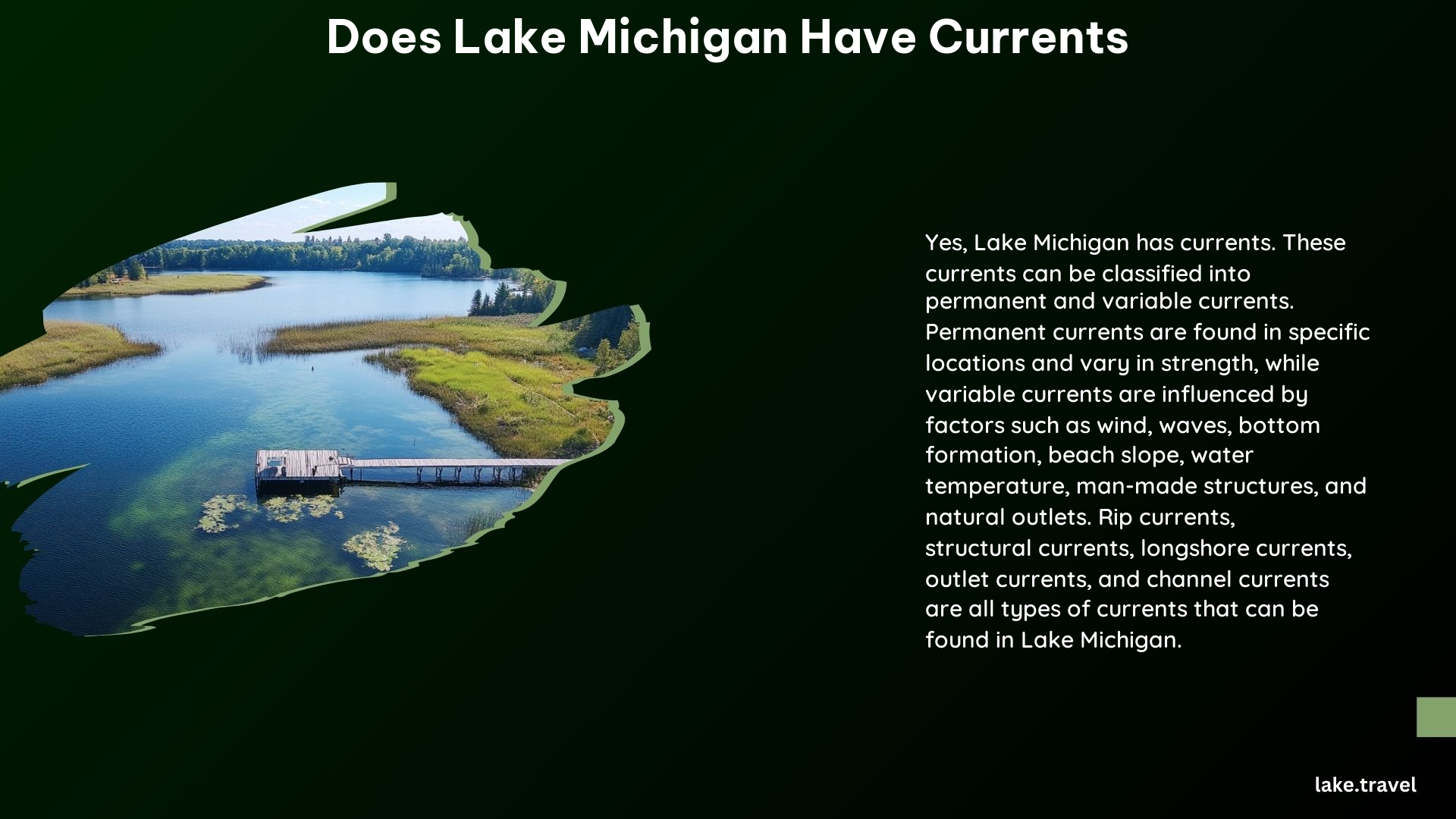Yes, Lake Michigan does have currents. These currents can be classified into two main types: permanent currents and variable currents. Permanent currents are always present in certain locations and vary only in strength, while variable currents are more unpredictable and dependent on factors such as wind, waves, and lake bottom shape.
Types of Currents Found in Lake Michigan

Rip Currents
Rip currents are formed when water piles up between a sandbar and the beach, creating a narrow but powerful stream of water and sand moving swiftly away from the shore. These currents can vary in size and speed and are found on many beaches every day.
Outlet Currents
Outlet currents are found where rivers and streams empty into the lake. These currents can be dangerous due to the rapid flow of water from the river or stream into the open water of the lake.
Channel Currents
Channel currents are formed when the flow of water speeds up as it goes between an island or structure and the shore, creating a bottleneck effect. These currents can be strengthened by wind and waves.
Structural Currents
Structural currents are found near man-made structures such as piers and breakwalls. These currents can be particularly dangerous due to the deflection of water flow around these structures.
Can Currents in Lake Michigan Be Deadly?

Yes, currents in Lake Michigan can be deadly. The highest number of deaths and rescues occur in Michigan, particularly along the eastern shore of Lake Michigan. Deaths have also been reported in other states bordering Lake Michigan, including Illinois, Indiana, and Wisconsin. The most common type of fatality is due to rip currents, which can pull swimmers away from the shore and exhaust them if they try to fight the current.
Safety Precautions
To ensure a safe and enjoyable experience in Lake Michigan, it is essential to:
- Stay informed about weather conditions and potential hazards.
- Swim in designated areas with lifeguards.
- Be cautious of underwater hazards and currents.
- Wear life jackets when boating or swimming.
- Familiarize yourself with local conditions and weather patterns.
- Know how to react when caught in a current, such as swimming parallel to the shoreline to escape a rip current.
References
- Michigan Sea Grant. (n.d.). Dangerous Currents. Retrieved from https://www.michiganseagrant.org/topics/coastal-hazards-and-safety/dangerous-currents/
- National Weather Service. (n.d.). High Swim Risk for Parts of Lake Michigan into This Evening. Retrieved from https://www.weather.gov/apx/ripcurrents_oldpage
- Michigan Sea Grant. (n.d.). Dangerous Currents 101. Retrieved from https://www.michiganseagrant.org/lessons/lessons/by-broad-concept/physical-science/dangerous-currents-101/
- Smith Lacien. (2023, May 5). A Deep Dive into the Most Dangerous Beaches Around the Great Lakes. Retrieved from https://www.smithlacien.com/blog/2023/05/a-deep-dive-into-the-most-dangerous-beaches-around-the-great-lakes/.
